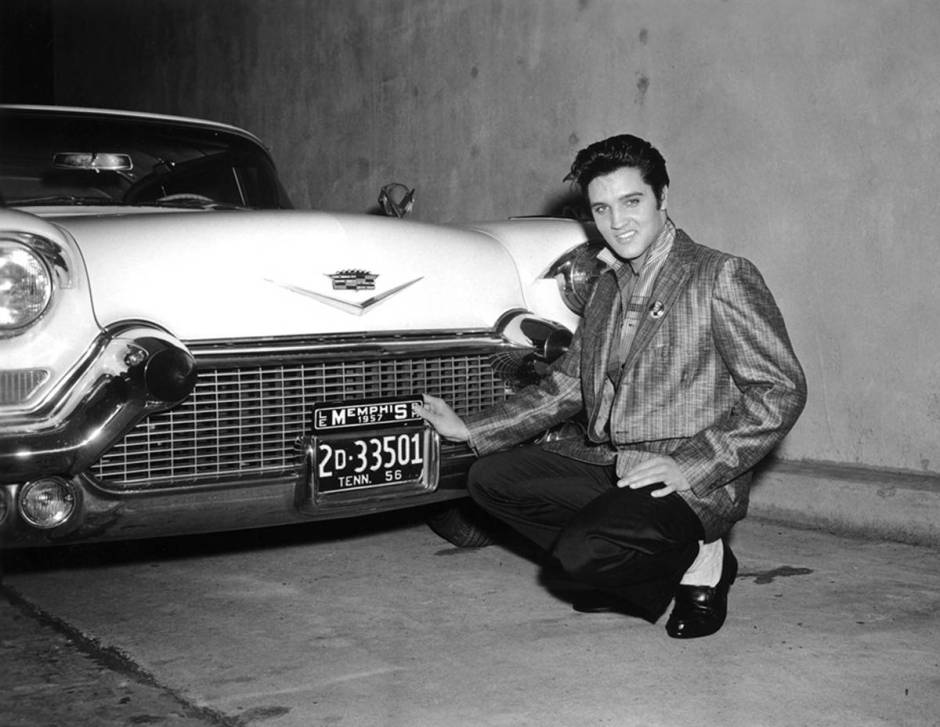“Welcome to my world,” Elvis Aaron Presley crooned in velvety-soft tones. “Won’t you come on in.”
This invitation, emanating from a hidden loudspeaker, could be heard shortly after my bus pulled into Graceland, the gated estate in Memphis, Tennessee, where the legendary rock ‘n’ roll star lived until his untimely death 37 years ago. It was a tantalizing line from one of his songs, and it wafted serenely across the expansive, oak-shaded lawn.
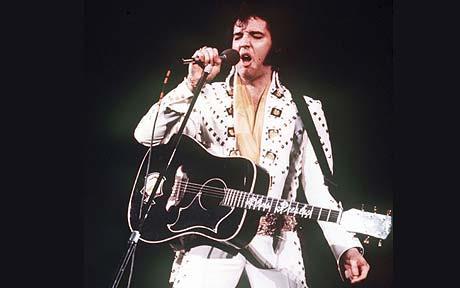
It was a pleasant way to begin a tour of Graceland, the shrine to the late, lamented entertainer and cultural icon whose all-too-brief life is showcased through mementos, artifacts, photographs, clothes, awards, cars, jets, videos and recordings.
Open to the public since 1982, and declared a National Historic Landmark eight years ago, Graceland is said to be the second most visited private residence in the United States after the White House in Washington, D.C.
Elvis purchased the American colonial-style mansion, supported by four white columns, in 1957, just a few years after he had recorded his first record in Memphis. He bought the house from a commercial painter for the then princely sum of $100,000 and proceeded to refurbish it, adding a swimming pool and a racquetball court, among other improvements.
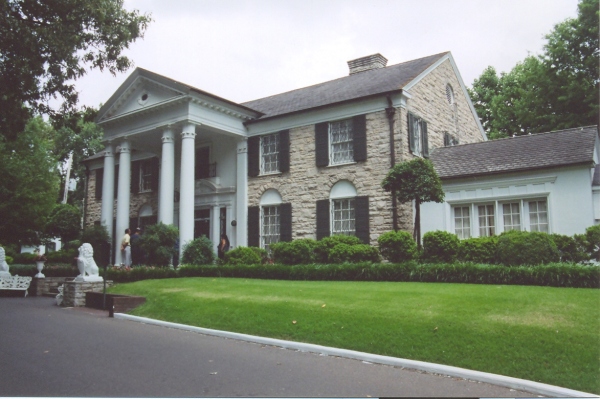
He shared Graceland with his wife, Priscilla, and with his parents, Vernon and Gladys, to whom he was close.
Surprisingly modest in appearance, Graceland resembles the residence of an accountant or a dentist, exuding an air of moderation and respectability. The writer Albert Goldman thought otherwise, comparing its furnishings to those of a bordello in New Orleans’ French Quarter.
The interior of the first floor — the second storey is off-limits to visitors — is a melange of wildly clashing styles. Elvis was not loathe to mix the old with the new. In the spirit of his songs, which blended blues, country and gospel music, he blazed his own trail when it came to decor and furniture.
The living room is a mish-mash of stained glass windows, white wall-to-wall carpeting and white sofas, set off by portraits of the Presley clan, which hailed from Mississippi. Elvis’ adjacent bedroom, lit by chandeliers, is dominated by a king-size bed, which is draped with a purple cover.
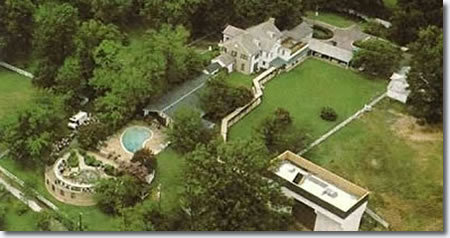
The modest dining room is filled with an elegant table, six chairs and two cabinets crammed with silverware. The black marble floor is flecked with white flourishes.
The kitchen is very 1950s, an amalgam of stodgy brown cabinets, exotic Chinese lanterns and carpeted floors.
Elvis’ wood-panelled “jungle” room is covered with an unsightly green carpet, adorned with ornate furniture and outfitted with an incongruous indoor waterfall.
The television room, painted in shades of yellow and blue and containing bright blue couches, has three TVs — Elvis loved watching newscasts, sports events and comedies — and his collection of country, rock and classical albums.
The pool room is hideous, the space occupied by upholstered chairs and the ceiling made of thick, suffocating fabric.
His father’s room, next to Elvis’ horse farm, is plastered with photographs of his famous son. Elvis, in a retro TV recording, expounds on the themes of romance and love.
The trophy room, probably the heart and soul of Graceland, displays Elvis’ first gold record, Heartbreak Hotel, and all his other hits, from Hound Dog and Love Me Tender to Are You Lonesome Tonight? and Don’t Be Cruel.

On display here, too, are his flamboyant stage outfits — including his flashy gold lame suit — newspaper clippings documenting both his cultural subversiveness and his all-American wholesomeness.
The racquetball court has been converted into a wall-to-wall and floor-to-ceiling mecca of his framed records, which sparkle in the light.
The piano that Elvis played the day before his death, on Aug. 16, 1977, is in an adjoining room.
The Sincerely Elvis Museum, across the street from Elvis’ mansion, pays tribute to his forgettable roles in such Hollywood movies as Jailhouse Rock and Loving You. The Elvis Lives exhibit brims with Elvis biographies, ranging from The Unmasking of Elvis Presley to Faux Elvis.
On a touch screen, you can listen to his greatest songs.
Although Elvis was an astute entrepreneur, always taking care of business, he was not a penny pincher. During the 1970s, he purchased two airplanes, a decommissioned 96-seat jet airliner, which he upgraded with all the bells and whistles and christened the Lisa Marie after his beloved daughter, and a smaller aircraft, Hound Dog II, in which his employees travelled.
The car museum is equally indicative of his propensity for spending lavishly on baubles. Elvis amassed quite a collection of vehicles, from a white Silver Cloud Rolls Royce and a purple Ferrari to a sporty red MG and a pink Cadillac.
Elvis, his parents and grandmother are buried in the Meditation Gardens, facing a reflecting pool, on the grounds of Graceland. Fulsome tributes are engraved on his gravestone: “A living legend” and “A precious gift from God.”
Elvis’ early years as a pioneer rock ‘n’ roller are chronicled at Sun Studios in downtown Memphis. There he recorded his first ever song, My Happiness, in honor of his mother’s birthday, and his first commercial record, That’s All Right, for the promoter Sam Phillips in 1954. Elvis’ terrific performance of Shake, Rattle and Roll, which he delivered with gusto in his first national TV appearance in 1956, is resurrected in a riveting video.
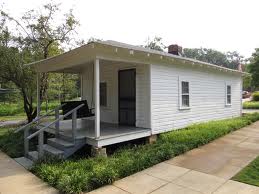
At the official Elvis Presley Birthplace in Tupelo, Mississippi, a fairly short drive from Memphis, you can walk through the 450-square foot, two-room shotgun shack where he was born in 1935. Elvis lived in Tupelo — where he bought his first guitar — until he was 13.
No mention is made of Elvis’ Jewish lineage. According to Stuart Rockoff, a historian at the Goldring Woldenberg Institute of Southern Jewish life in Jackson, Mississippi, Elvis’ great-great grandmother, Nancy Burdine, was apparently Jewish. On tours, Elvis usually wore a medallion with various religious symbols, including a Star of David. Asked why he wore it, he’s said to have replied, “I don’t want to miss out on heaven on a technicality.”
Elvis, it seems, was always taking care of business.
